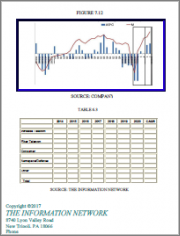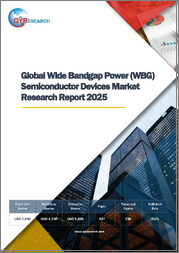
|
시장보고서
상품코드
1663080
실리콘(Si) 파워 디바이스 시장 규모, 점유율, 성장 분석 : 유형별, 용도별, 지역별 - 산업 예측(2025-2032년)Silicon (Si) Power Devices Market Size, Share, and Growth Analysis, By Type (Power Transistors, Power Diodes), By Application (Automotive, Industrial), By Region - Industry Forecast 2025-2032 |
||||||
실리콘(Si) 파워 디바이스 시장 규모는 2023년 79억 7,000만 달러로 평가되었고, 2024년 83억 3,000만 달러에서 2032년에는 118억 4,000만 달러로 확대될 것으로 예상되며, 예측 기간(2025-2032년) 동안 4.5%의 연평균 복합 성장률(CAGR)을 보일 전망입니다.
에너지 효율에 대한 수요 증가, 전기자동차(EV)의 부상, 재생에너지 분야의 급격한 성장에 힘입어 실리콘 파워 디바이스 세계 시장이 빠르게 성장하고 있으며, EV로의 전환은 파워트레인, 충전소, 에너지 저장장치에 실리콘 파워 디바이스의 필요성을 크게 증가시킬 것입니다. 를 크게 증가시킬 것입니다. 정부의 인센티브는 이러한 수요를 더욱 증가시키고 있습니다. 동시에, 제조 및 의료 등의 분야에서 산업 자동화가 빠르게 진행되고 있으며, 실리콘 소자는 전력 제어 및 전력 변환을 강화하는 데 중요한 역할을 하고 있습니다. 또한 스마트 시티 및 전력망 현대화와 같은 인프라 프로젝트에 대한 정부의 대규모 투자는 이러한 장치에 대한 수요를 증가시킬 것입니다. 더 높은 전력 밀도와 신뢰성 향상을 위한 지속적인 기술 혁신도 시장 성장을 가속하고 보다 효율적인 전력 시스템을 위한 길을 열어주고 있습니다.
목차
서론
- 조사 목적
- 조사 범위
- 정의
조사 방법
- 정보 조달
- 2차와 1차 데이터 방법
- 시장 규모 예측
- 시장 전제조건과 제한
주요 요약
- 세계 시장 전망
- 공급과 수요 동향 분석
- 부문별 기회 분석
시장 역학과 전망
- 시장 개요
- 시장 규모
- 시장 역학
- 성장 촉진요인과 기회
- 성장 억제요인과 과제
- Porter의 Five Forces 분석
주요 시장 인사이트
- 중요 성공 요인
- 경쟁 정도
- 주요 투자 기회
- 시장 생태계
- 시장의 매력 지수(2024년)
- PESTEL 분석
- 거시경제 지표
- 밸류체인 분석
- 가격 분석
- 사례 연구
- 규제 상황
- 특허 분석
실리콘(Si) 파워 디바이스 시장 규모 : 유형별&CAGR(2025-2032년)
- 시장 개요
- 파워 트랜지스터
- 파워 다이오드
실리콘(Si) 파워 디바이스 시장 규모 : 용도별&CAGR(2025-2032년)
- 시장 개요
- 자동차
- 산업
- 가전
- 통신
- 에너지 및 전력
- 의료기기
- 항공우주 및 방위
실리콘(Si) 파워 디바이스 시장 규모 : 지역별&CAGR(2025-2032년)
- 북미
- 미국
- 캐나다
- 유럽
- 독일
- 스페인
- 프랑스
- 영국
- 이탈리아
- 기타 유럽
- 아시아태평양
- 중국
- 인도
- 일본
- 한국
- 기타 아시아태평양
- 라틴아메리카
- 브라질
- 기타 라틴아메리카
- 중동 및 아프리카
- GCC 국가
- 남아프리카공화국
- 기타 중동 및 아프리카
경쟁 정보
- 주요 5개사 비교
- 주요 기업의 시장 포지셔닝(2024년)
- 주요 시장 기업이 채택한 전략
- 최근 시장 동향
- 기업의 시장 점유율 분석(2024년)
- 주요 기업 개요
- 기업 상세
- 제품 포트폴리오 분석
- 기업 부문별 점유율 분석
- 전년대비 매출 비교(2022-2024년)
주요 기업 개요
- Infineon Technologies AG(Germany)
- ON Semiconductor(USA)
- STMicroelectronics(Switzerland)
- Mitsubishi Electric Corporation(Japan)
- Vishay Intertechnology, Inc.(USA)
- Fuji Electric Co., Ltd.(Japan)
- Renesas Electronics Corporation(Japan)
- Texas Instruments Incorporated(USA)
- TOSHIBA CORPORATION(Japan)
- ABB(Switzerland)
- Littelfuse, Inc.(USA)
- Analog Devices, Inc.(USA)
- Microchip Technology Inc.(USA)
- ROHM CO., LTD.(Japan)
- Semikron(Germany)
- Qorvo, Inc.(USA)
- WOLFSPEED, INC.(USA)
- Efficient Power Conversion Corporation(USA)
결론과 제안
LSH 25.03.31Silicon (Si) Power Devices Market size was valued at USD 7.97 billion in 2023 and is poised to grow from USD 8.33 billion in 2024 to USD 11.84 billion by 2032, growing at a CAGR of 4.5% during the forecast period (2025-2032).
The global silicon power devices market is rapidly expanding, fueled by growing energy efficiency demands, the rise of electric vehicles (EVs), and the burgeoning renewable energy sector. The transition to EVs significantly boosts the need for silicon power devices in powertrains, charging stations, and energy storage. Government incentives further amplify this demand. Concurrently, industrial automation is advancing swiftly across sectors like manufacturing and healthcare, where silicon devices play a crucial role in enhancing power control and conversion. Additionally, heavy government investments in infrastructure projects, such as smart cities and grid modernization, are set to increase demand for these devices. Continuous technological innovations aimed at higher power densities and improved reliability are also driving market growth, paving the way for more efficient power systems.
Top-down and bottom-up approaches were used to estimate and validate the size of the Silicon (Si) Power Devices market and to estimate the size of various other dependent submarkets. The research methodology used to estimate the market size includes the following details: The key players in the market were identified through secondary research, and their market shares in the respective regions were determined through primary and secondary research. This entire procedure includes the study of the annual and financial reports of the top market players and extensive interviews for key insights from industry leaders such as CEOs, VPs, directors, and marketing executives. All percentage shares split, and breakdowns were determined using secondary sources and verified through Primary sources. All possible parameters that affect the markets covered in this research study have been accounted for, viewed in extensive detail, verified through primary research, and analyzed to get the final quantitative and qualitative data.
Silicon (Si) Power Devices Market Segments Analysis
Global Silicon (Si) Power Devices Market is segmented by Type, Application and region. Based on Type, the market is segmented intopower transistorsand Power Diodes. Based on Application, the market is segmented into Automotive, Industrial, Consumer Electronics, Telecommunications, Energy and Power, Medical Devices and Aerospace and Defense. Based on region, the market is segmented into North America, Europe, Asia Pacific, Latin America and Middle East & Africa.
Driver of the Silicon (Si) Power Devices Market
A significant catalyst for the global Silicon (Si) Power Devices market is the rising demand for energy-efficient and high-performance power electronics across diverse sectors, including automotive, consumer electronics, and renewable energy. Silicon Power Devices provide numerous benefits, such as high voltage capacity, minimal conduction losses, and the ability to operate at elevated temperatures, positioning them as a preferred solution for power electronics applications. Moreover, the surging adoption of electric vehicles and the growing emphasis on sustainable energy solutions further propel market expansion, highlighting the critical role Silicon Power Devices play in meeting modern energy needs and enhancing technological advancements.
Restraints in the Silicon (Si) Power Devices Market
A significant challenge facing the global Silicon (Si) Power Devices market is the increasing competition posed by alternative power semiconductor materials like silicon carbide (SiC) and gallium nitride (GaN). These advanced materials provide superior efficiency, faster switching capabilities, and enhanced thermal conductivity, rendering them more appropriate for high-power and high-frequency applications. Furthermore, the comparatively higher cost of Si Power Devices can impede market growth, particularly in regions where price sensitivity is a crucial factor. As these alternatives gain traction and technological advancements continue, the silicon-based devices may struggle to maintain their market position, affecting overall industry dynamics.
Market Trends of the Silicon (Si) Power Devices Market
The Silicon Power Devices market is witnessing a robust trend toward the adoption of Silicon Carbide (SiC) and Gallium Nitride (GaN) technologies, driven by their superior performance characteristics such as enhanced efficiency and rapid switching capabilities. These advanced materials are becoming vital for a myriad of industries, particularly in the booming sectors of electric vehicles (EVs), renewable energy solutions, and high-performance data centers. Notably, leading automotive manufacturers like Tesla are incorporating SiC power modules into their vehicle designs to optimize efficiency and extend range, significantly influencing the market dynamics and promoting a shift toward greener, more efficient power solutions across multiple applications.
Table of Contents
Introduction
- Objectives of the Study
- Scope of the Report
- Definitions
Research Methodology
- Information Procurement
- Secondary & Primary Data Methods
- Market Size Estimation
- Market Assumptions & Limitations
Executive Summary
- Global Market Outlook
- Supply & Demand Trend Analysis
- Segmental Opportunity Analysis
Market Dynamics & Outlook
- Market Overview
- Market Size
- Market Dynamics
- Drivers & Opportunities
- Restraints & Challenges
- Porters Analysis
- Competitive rivalry
- Threat of substitute
- Bargaining power of buyers
- Threat of new entrants
- Bargaining power of suppliers
Key Market Insights
- Key Success Factors
- Degree of Competition
- Top Investment Pockets
- Market Ecosystem
- Market Attractiveness Index, 2024
- PESTEL Analysis
- Macro-Economic Indicators
- Value Chain Analysis
- Pricing Analysis
- Case Studies
- Regulatory Landscape
- Patent Analysis
Global Silicon (Si) Power Devices Market Size by Type & CAGR (2025-2032)
- Market Overview
- Power Transistors
- Power Diodes
Global Silicon (Si) Power Devices Market Size by Application & CAGR (2025-2032)
- Market Overview
- Automotive
- Industrial
- Consumer Electronics
- Telecommunications
- Energy and Power
- Medical Devices
- Aerospace and Defense
Global Silicon (Si) Power Devices Market Size & CAGR (2025-2032)
- North America (Type, Application)
- US
- Canada
- Europe (Type, Application)
- Germany
- Spain
- France
- UK
- Italy
- Rest of Europe
- Asia Pacific (Type, Application)
- China
- India
- Japan
- South Korea
- Rest of Asia-Pacific
- Latin America (Type, Application)
- Brazil
- Rest of Latin America
- Middle East & Africa (Type, Application)
- GCC Countries
- South Africa
- Rest of Middle East & Africa
Competitive Intelligence
- Top 5 Player Comparison
- Market Positioning of Key Players, 2024
- Strategies Adopted by Key Market Players
- Recent Developments in the Market
- Company Market Share Analysis, 2024
- Company Profiles of All Key Players
- Company Details
- Product Portfolio Analysis
- Company's Segmental Share Analysis
- Revenue Y-O-Y Comparison (2022-2024)
Key Company Profiles
- Infineon Technologies AG (Germany)
- Company Overview
- Business Segment Overview
- Financial Updates
- Key Developments
- ON Semiconductor (USA)
- Company Overview
- Business Segment Overview
- Financial Updates
- Key Developments
- STMicroelectronics (Switzerland)
- Company Overview
- Business Segment Overview
- Financial Updates
- Key Developments
- Mitsubishi Electric Corporation (Japan)
- Company Overview
- Business Segment Overview
- Financial Updates
- Key Developments
- Vishay Intertechnology, Inc. (USA)
- Company Overview
- Business Segment Overview
- Financial Updates
- Key Developments
- Fuji Electric Co., Ltd. (Japan)
- Company Overview
- Business Segment Overview
- Financial Updates
- Key Developments
- Renesas Electronics Corporation (Japan)
- Company Overview
- Business Segment Overview
- Financial Updates
- Key Developments
- Texas Instruments Incorporated (USA)
- Company Overview
- Business Segment Overview
- Financial Updates
- Key Developments
- TOSHIBA CORPORATION (Japan)
- Company Overview
- Business Segment Overview
- Financial Updates
- Key Developments
- ABB (Switzerland)
- Company Overview
- Business Segment Overview
- Financial Updates
- Key Developments
- Littelfuse, Inc. (USA)
- Company Overview
- Business Segment Overview
- Financial Updates
- Key Developments
- Analog Devices, Inc. (USA)
- Company Overview
- Business Segment Overview
- Financial Updates
- Key Developments
- Microchip Technology Inc. (USA)
- Company Overview
- Business Segment Overview
- Financial Updates
- Key Developments
- ROHM CO., LTD. (Japan)
- Company Overview
- Business Segment Overview
- Financial Updates
- Key Developments
- Semikron (Germany)
- Company Overview
- Business Segment Overview
- Financial Updates
- Key Developments
- Qorvo, Inc. (USA)
- Company Overview
- Business Segment Overview
- Financial Updates
- Key Developments
- WOLFSPEED, INC. (USA)
- Company Overview
- Business Segment Overview
- Financial Updates
- Key Developments
- Efficient Power Conversion Corporation (USA)
- Company Overview
- Business Segment Overview
- Financial Updates
- Key Developments



















